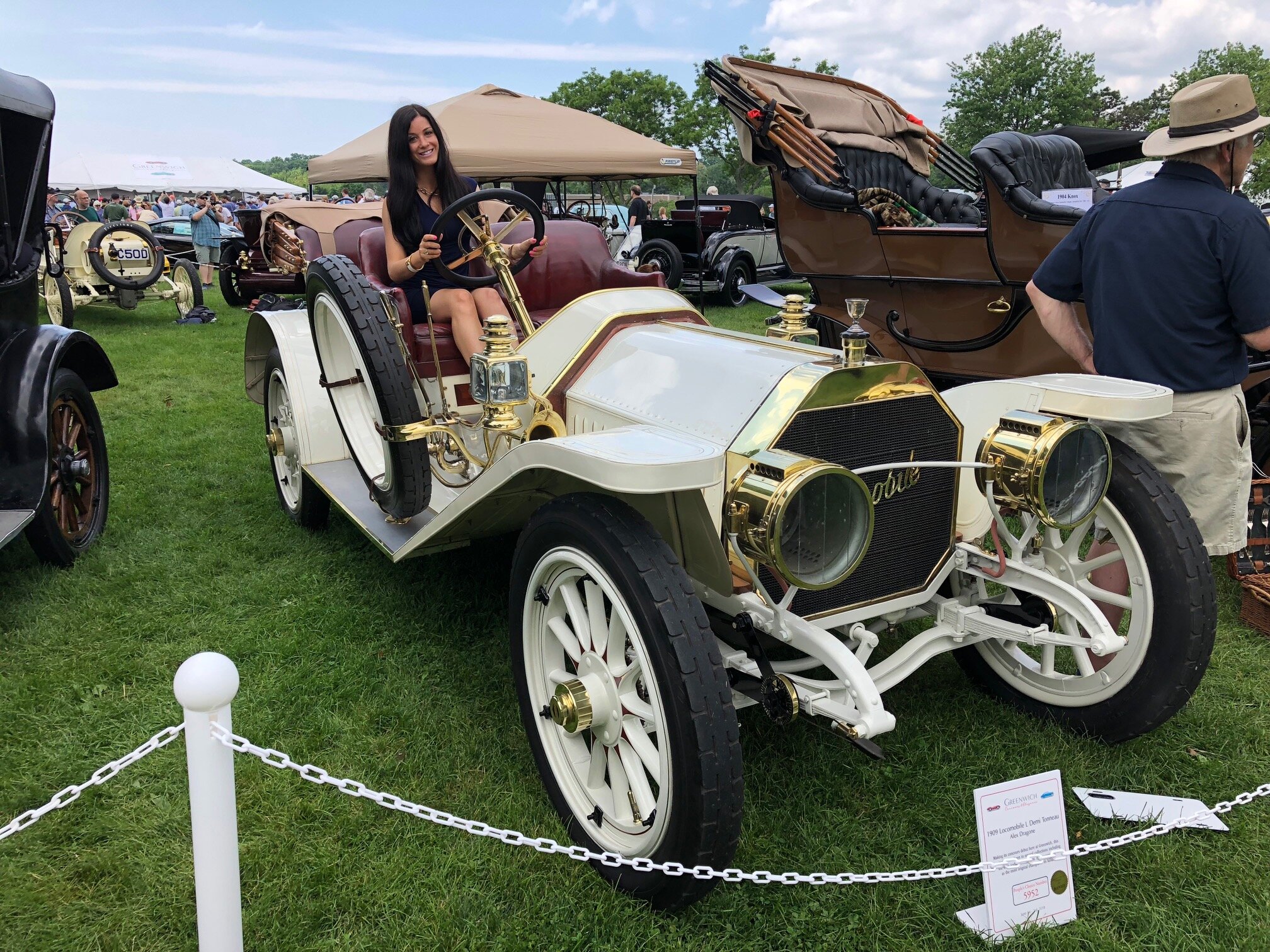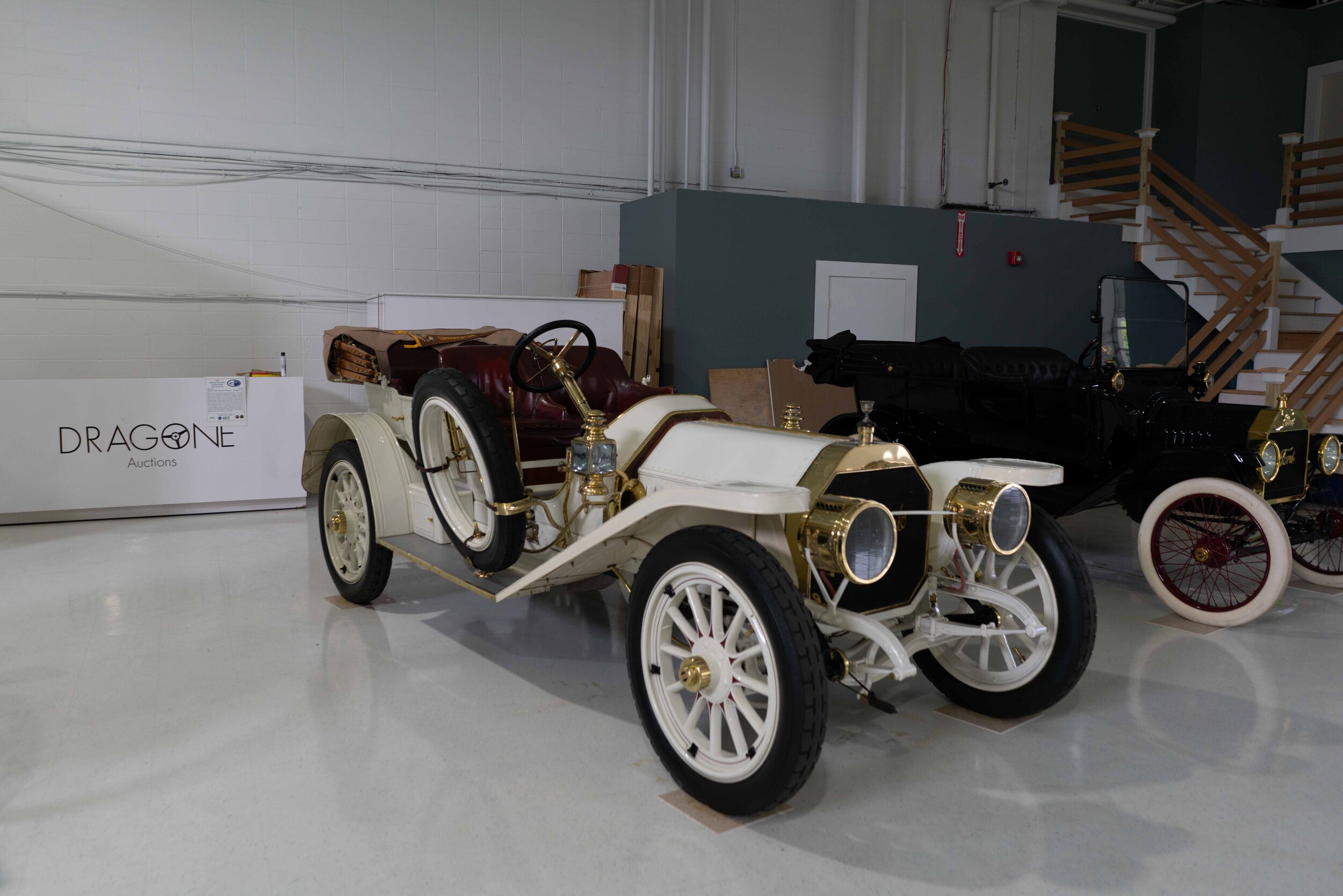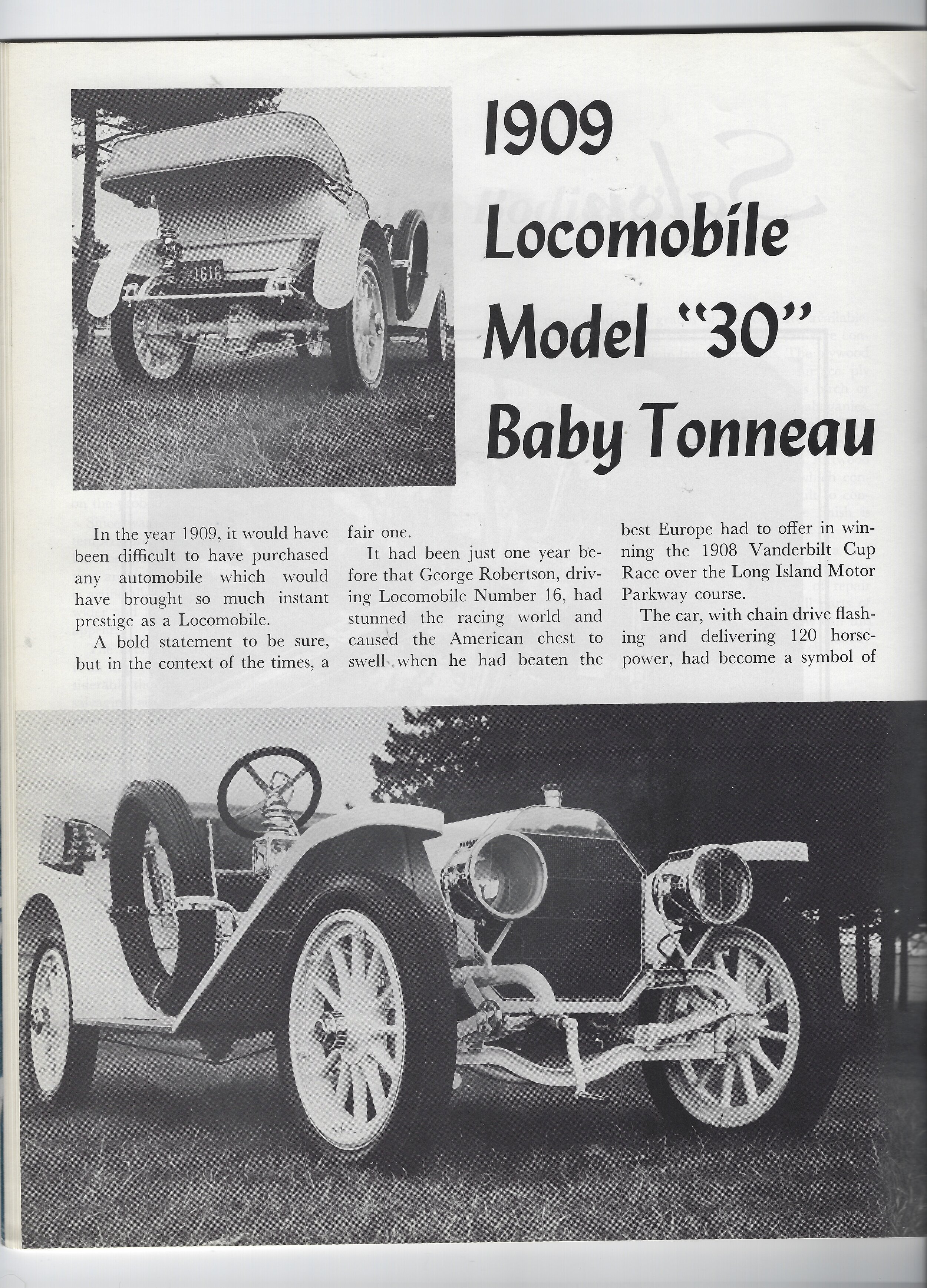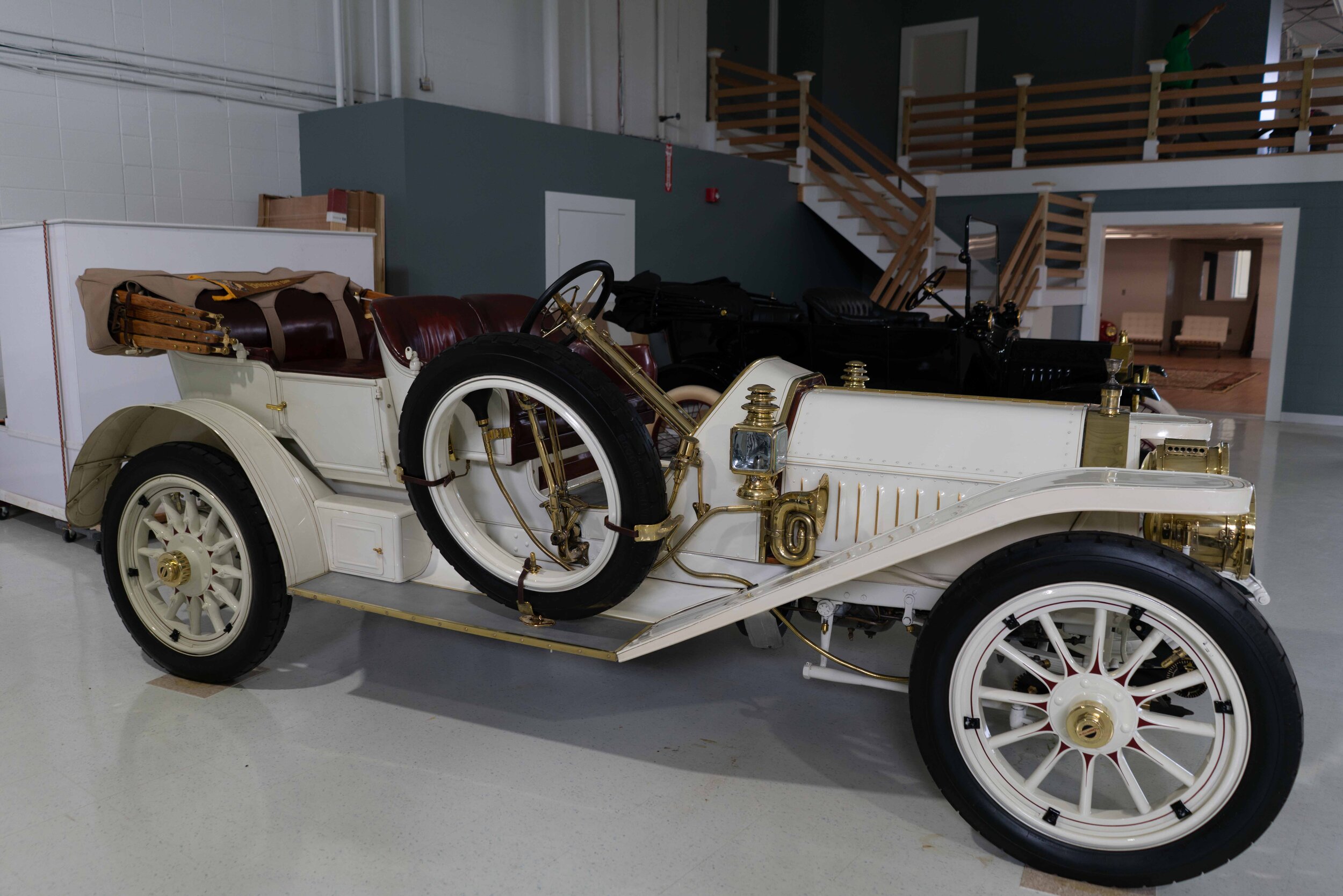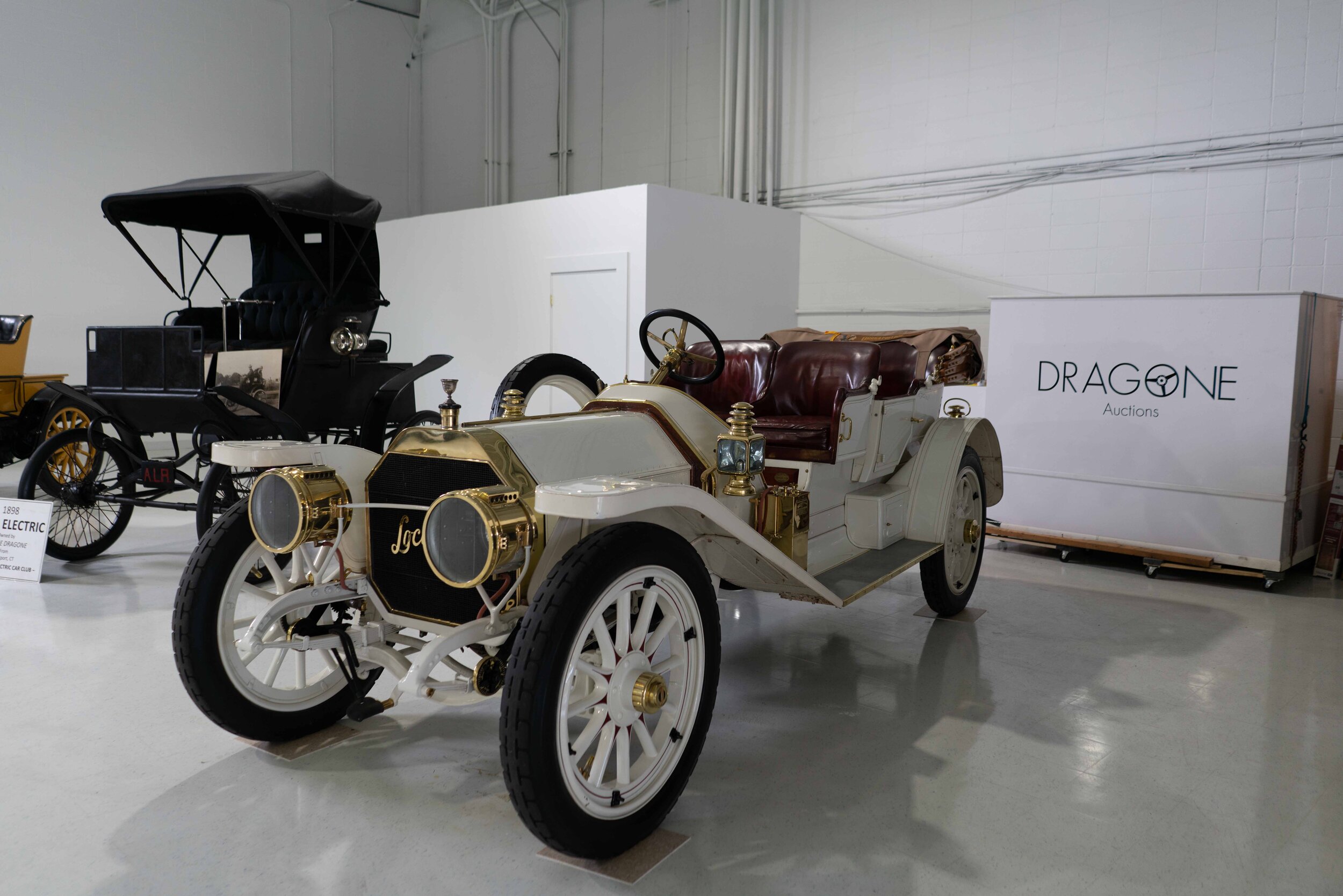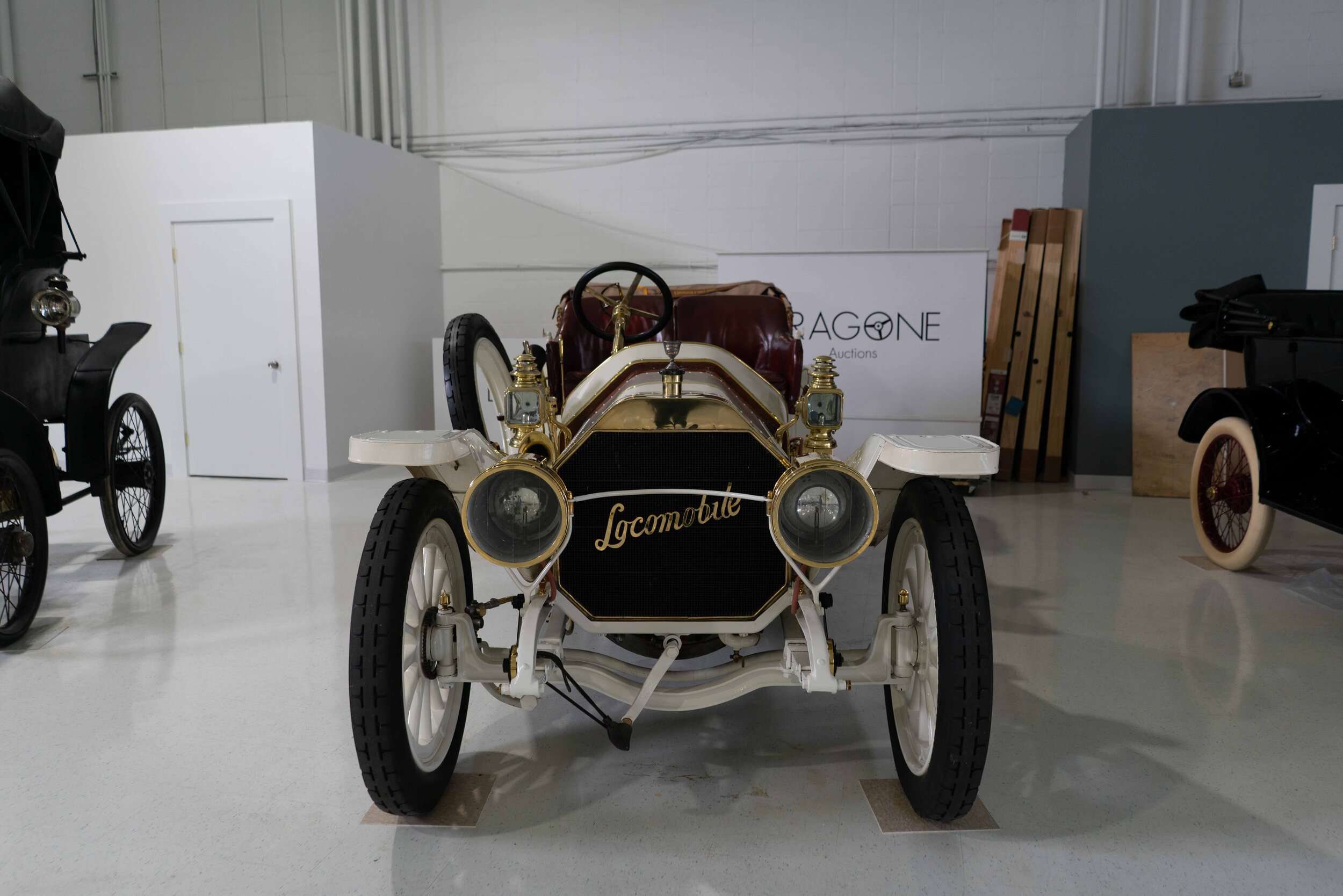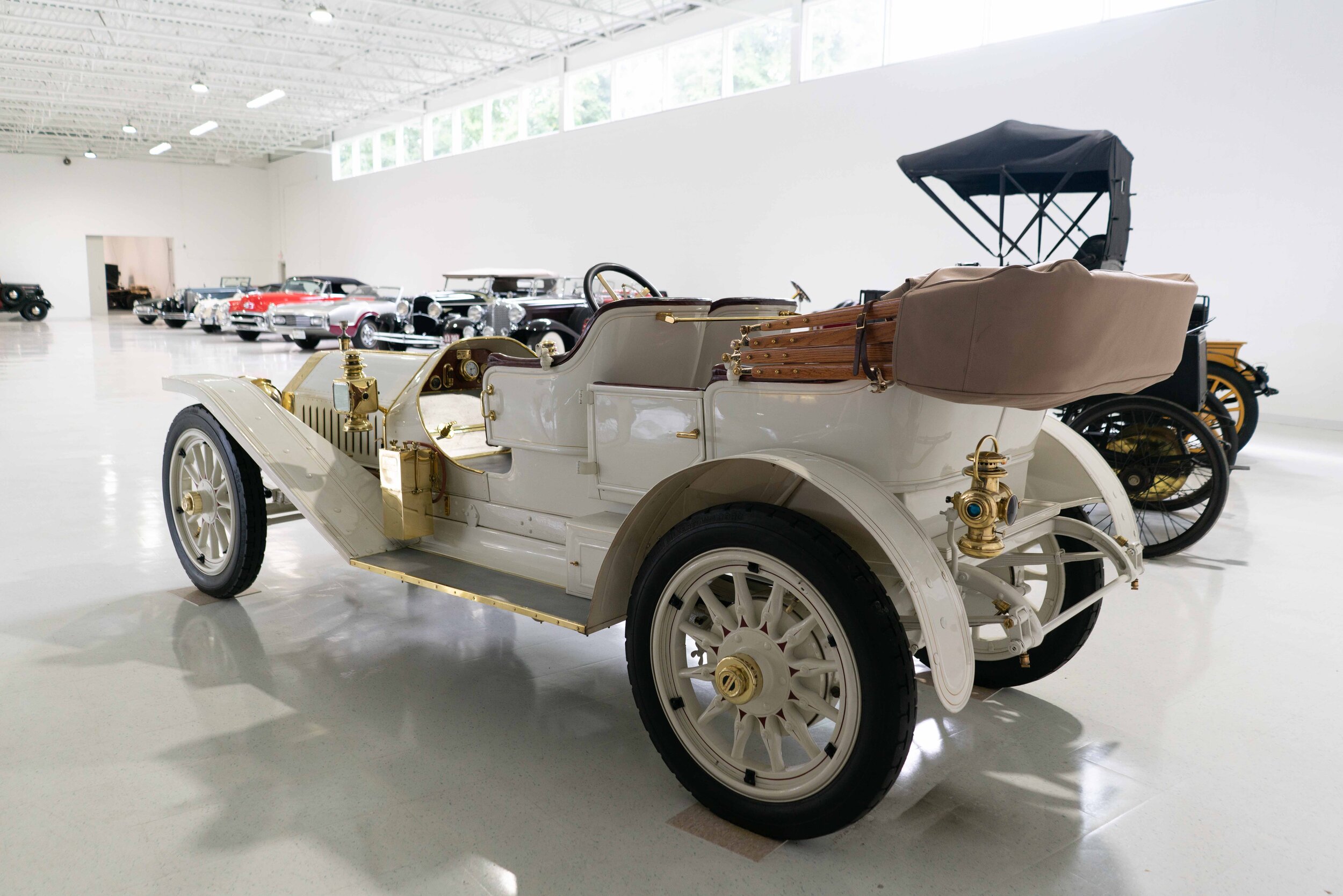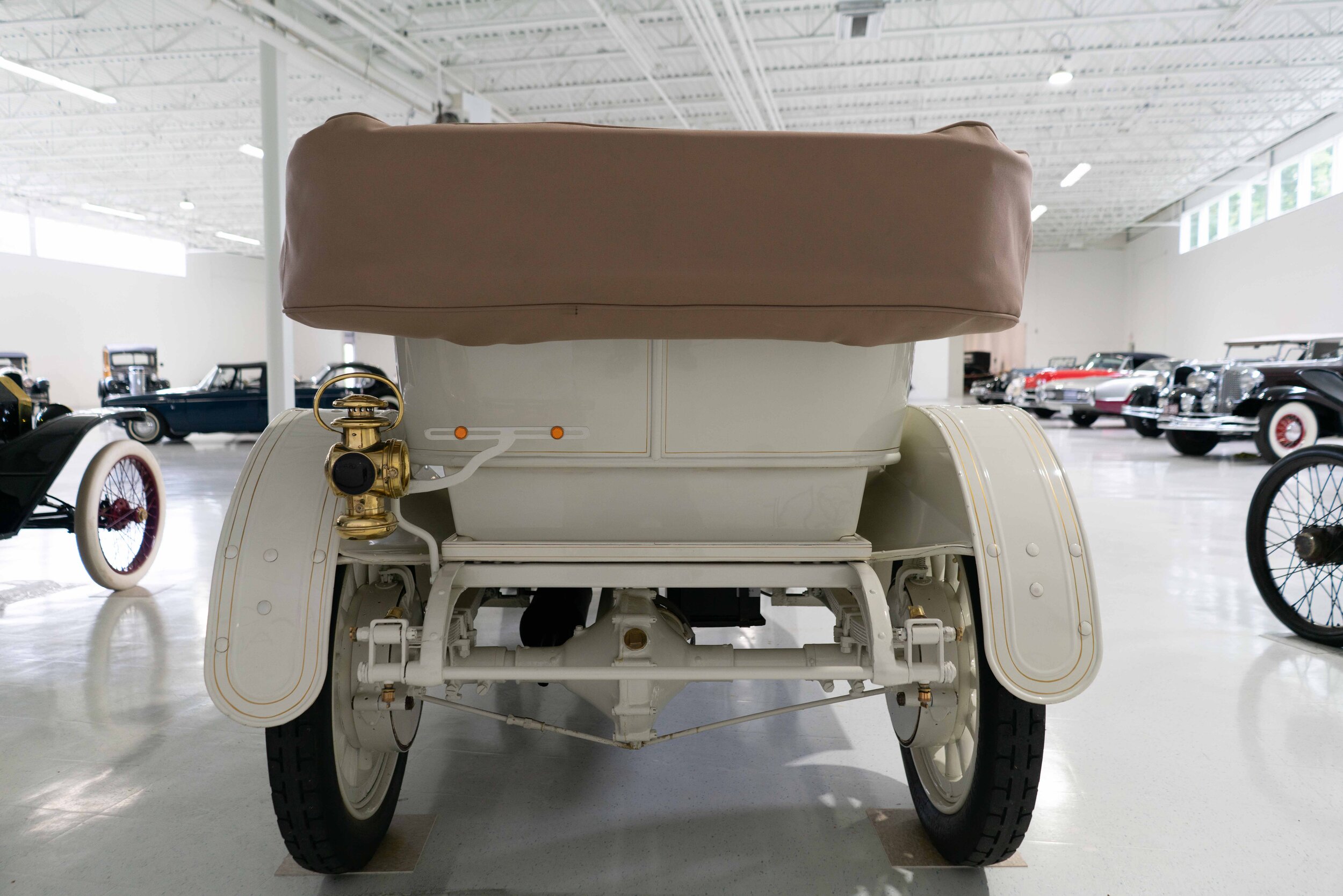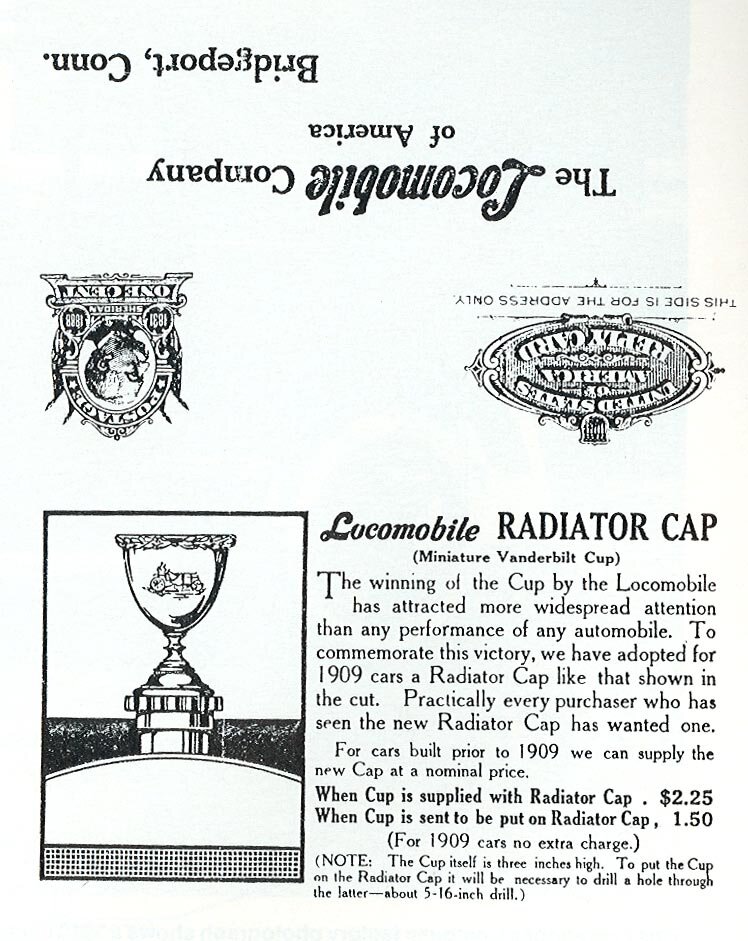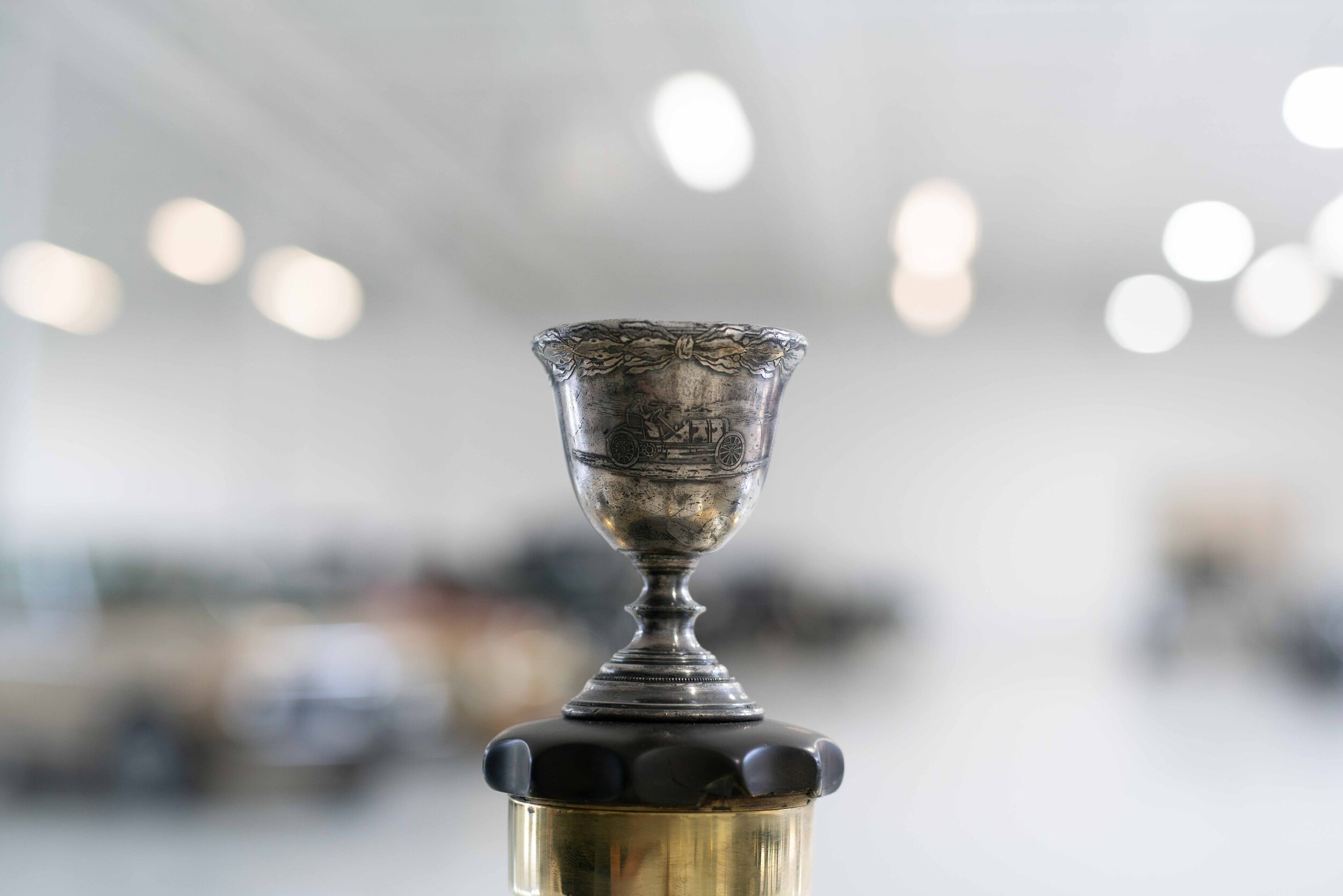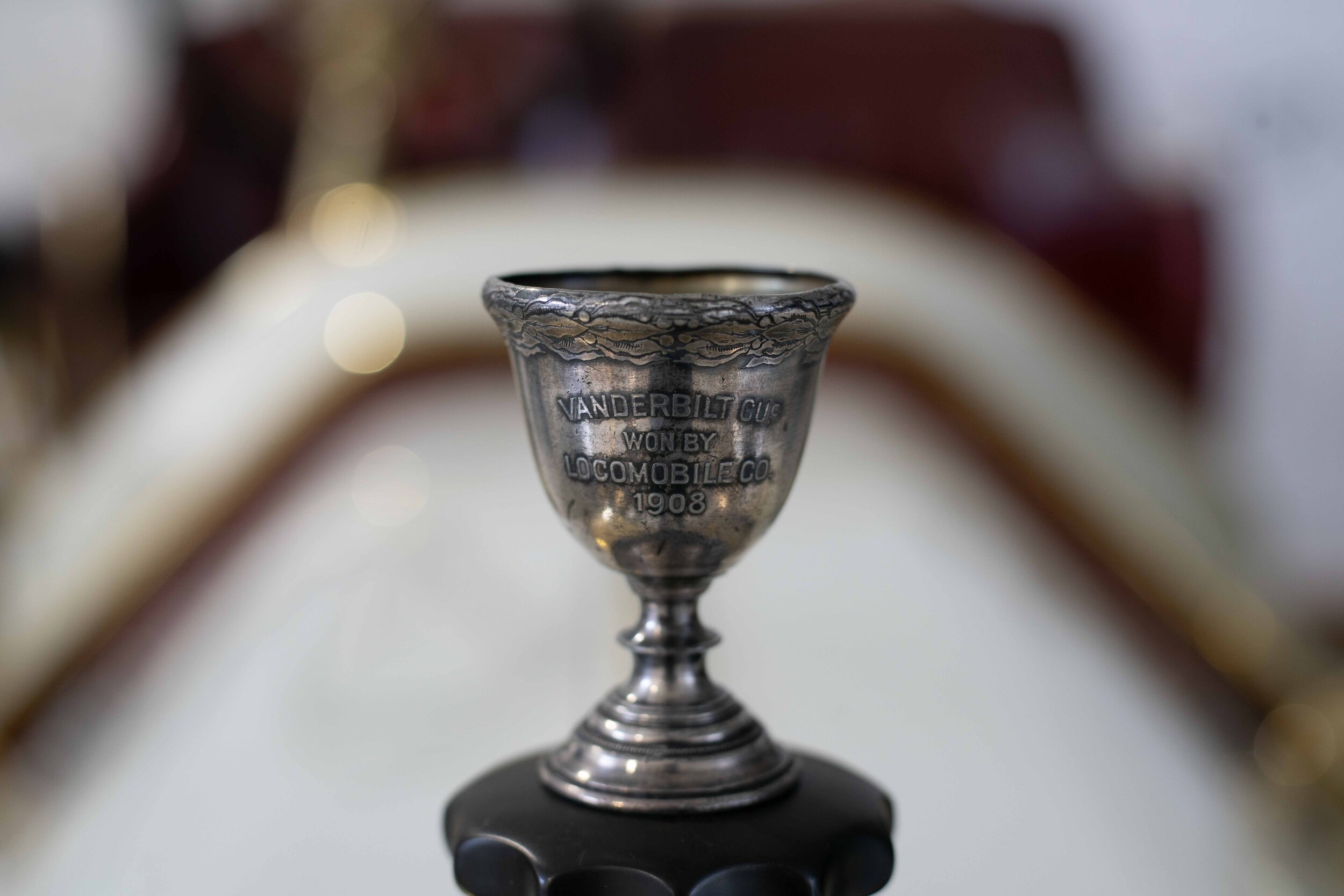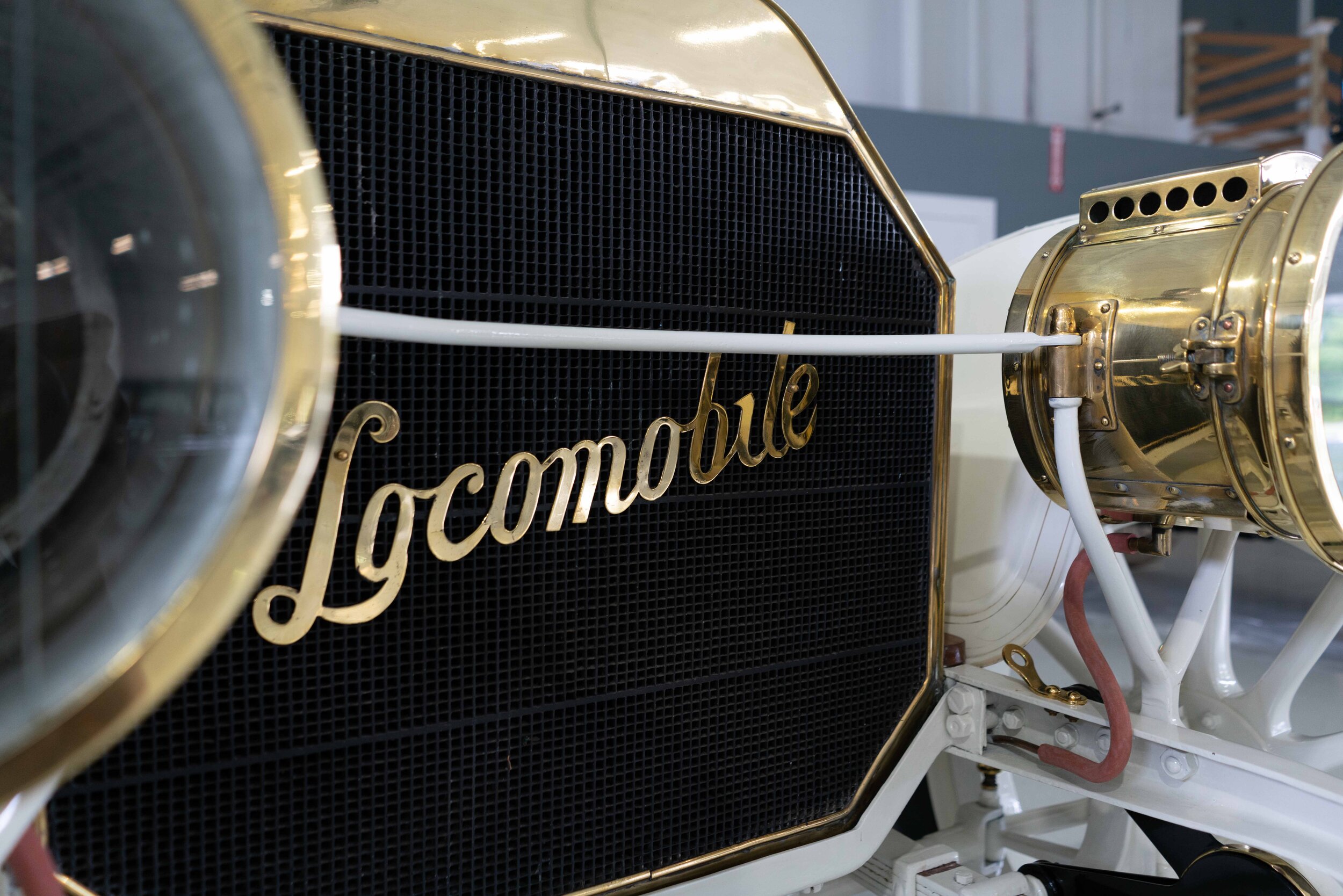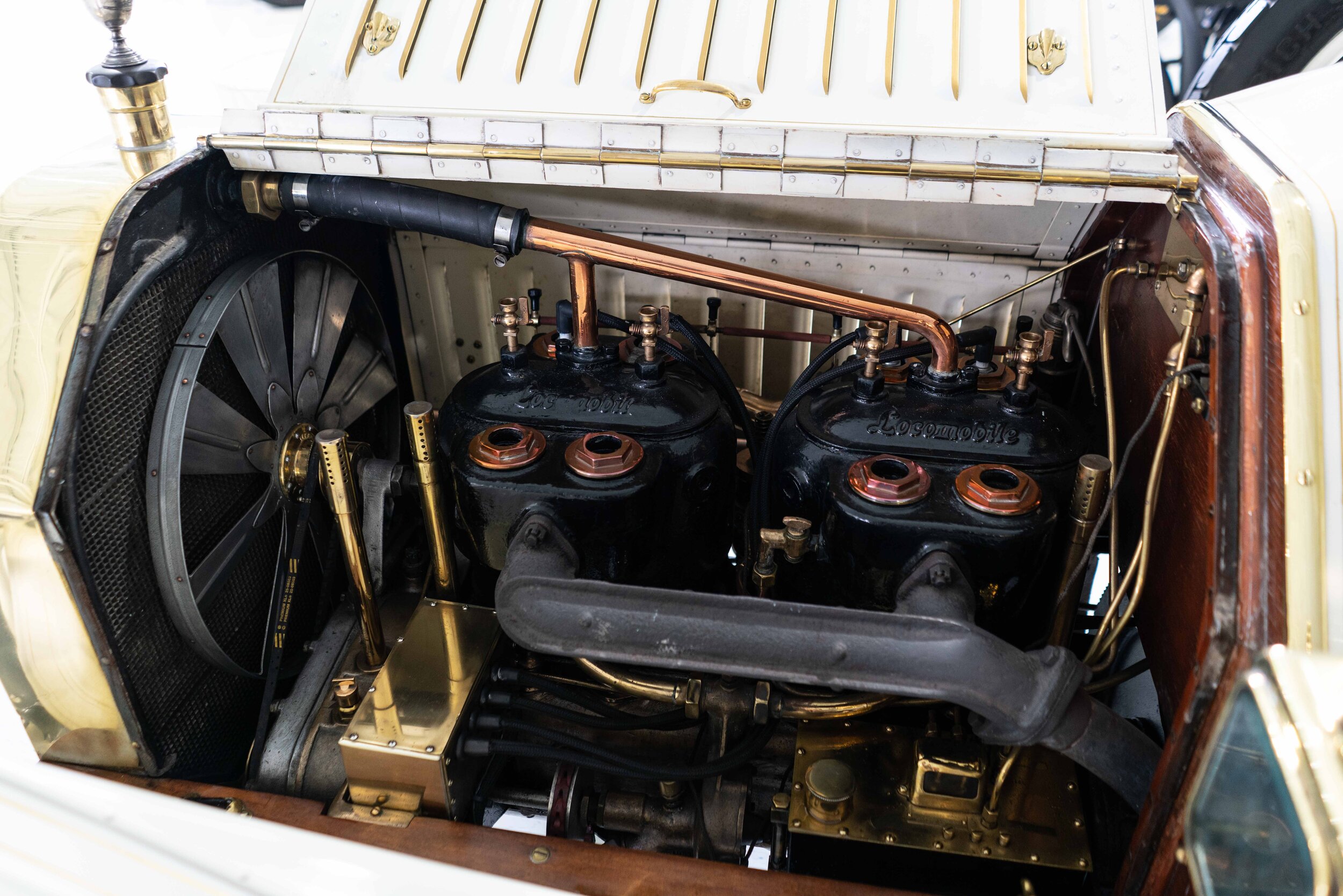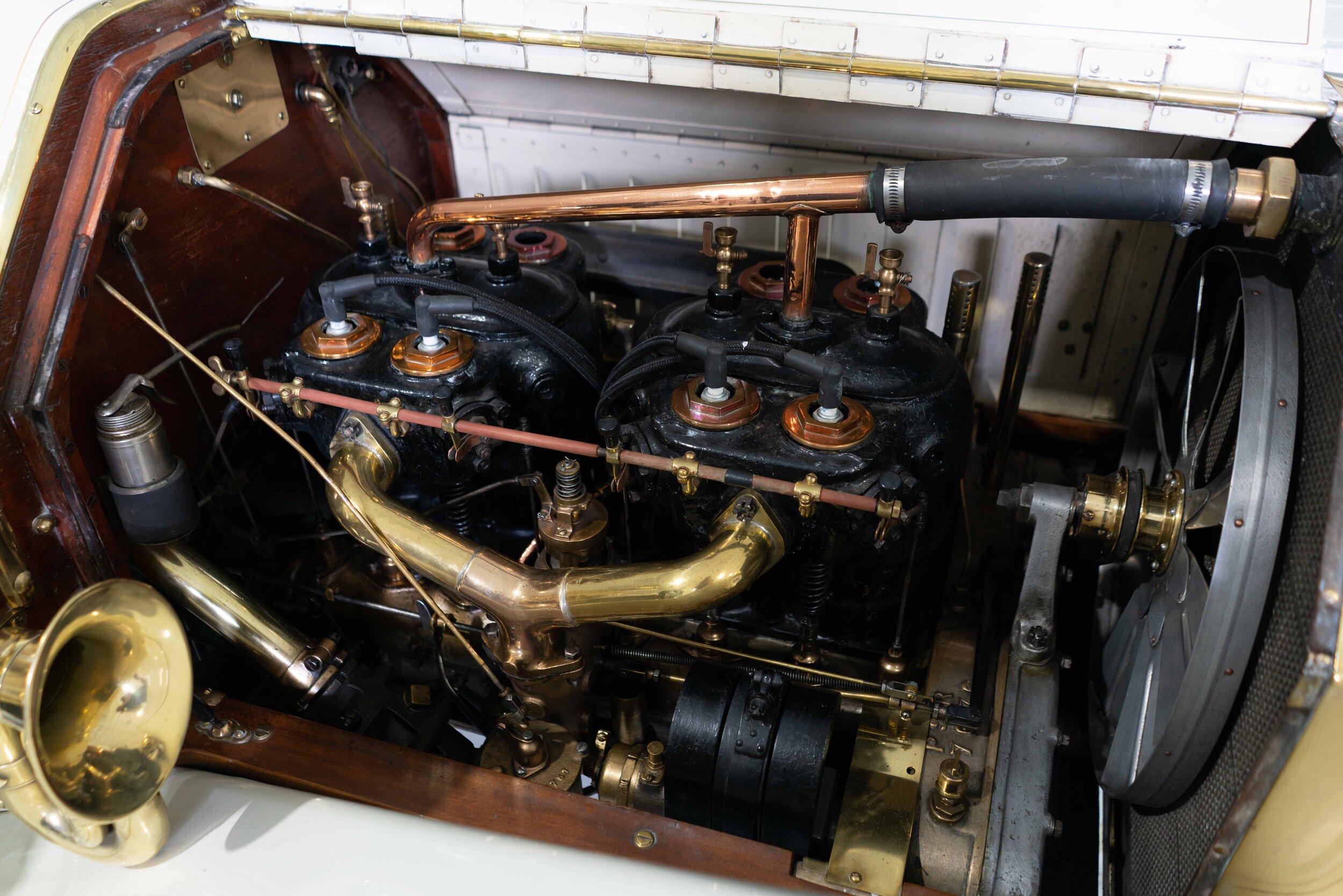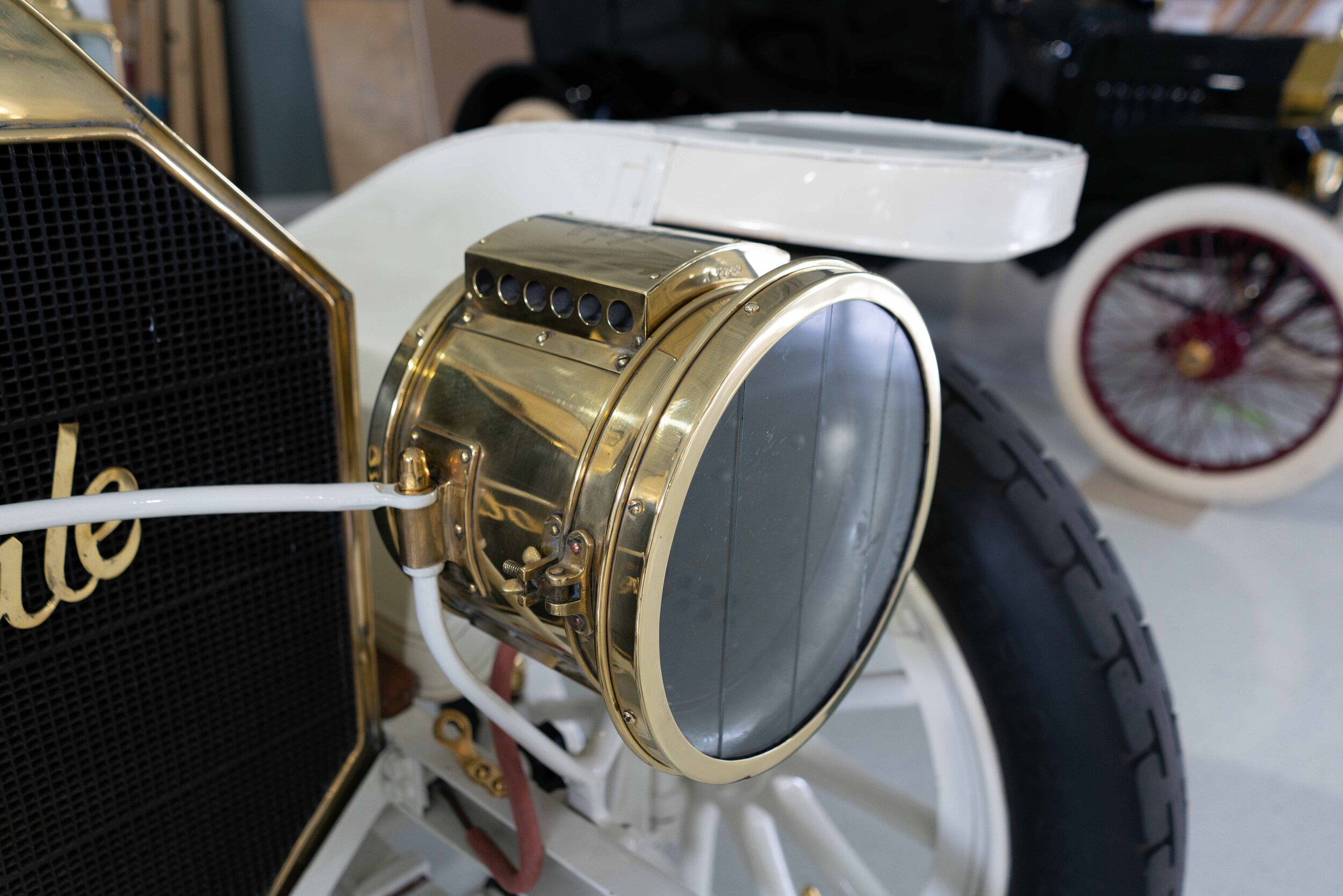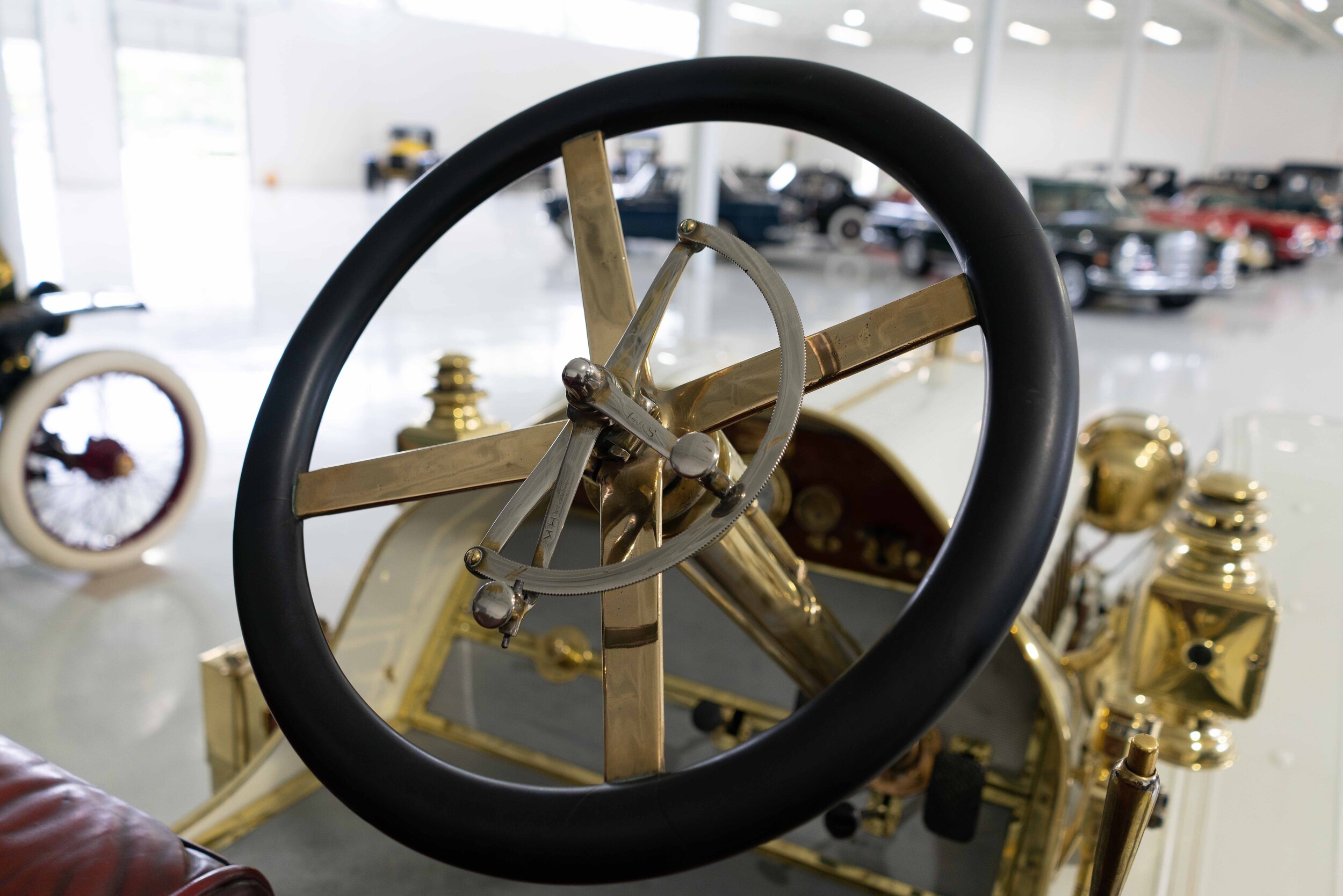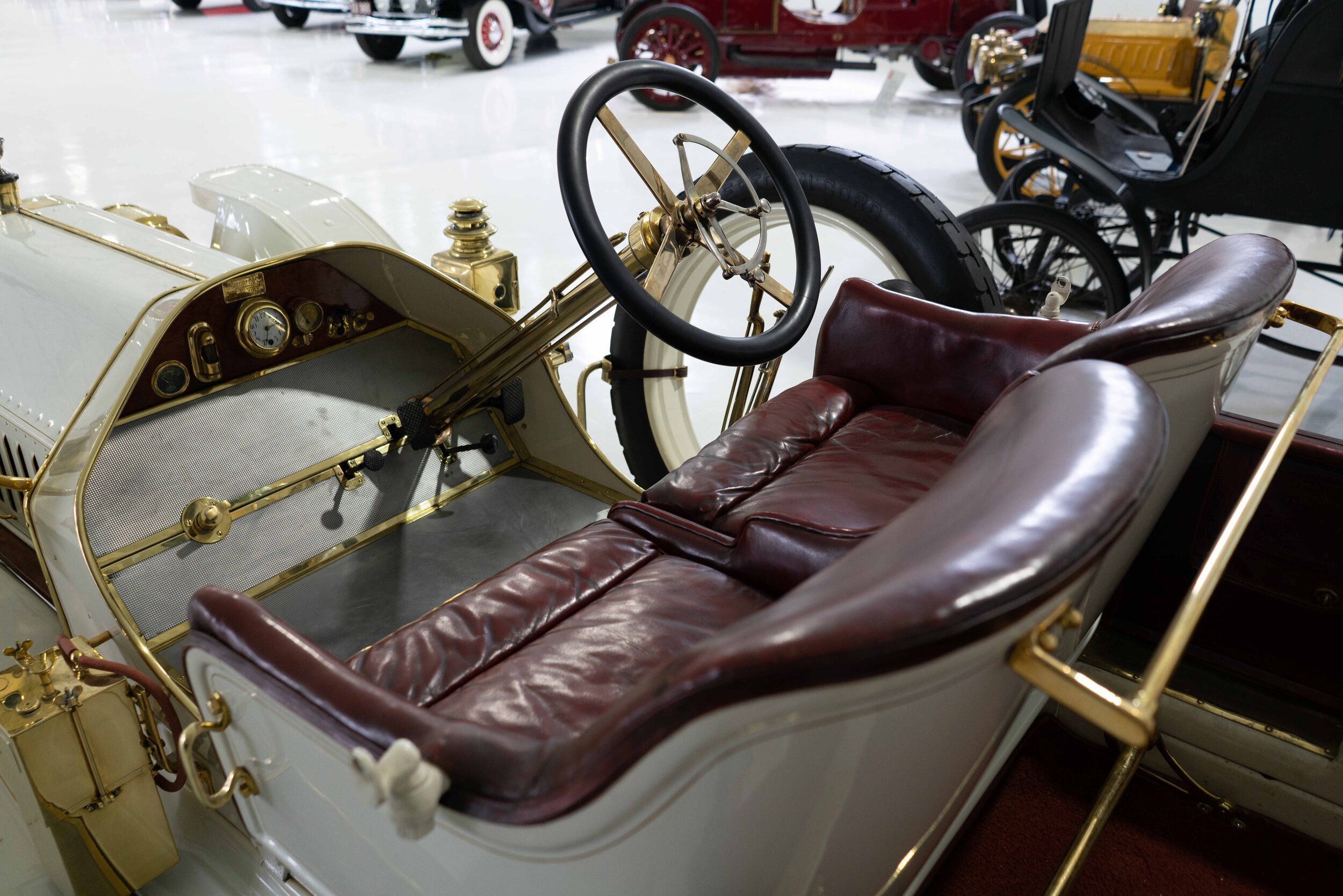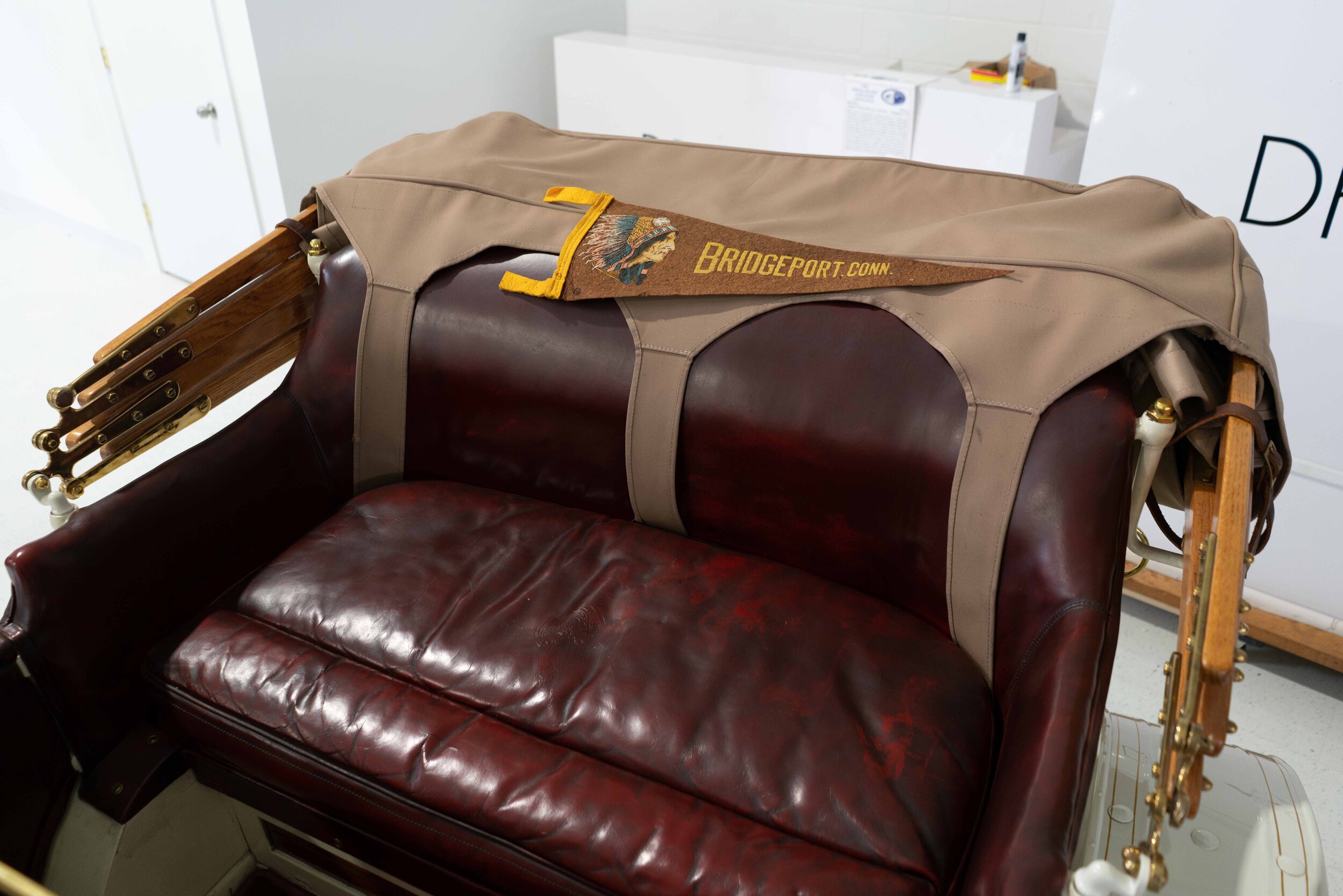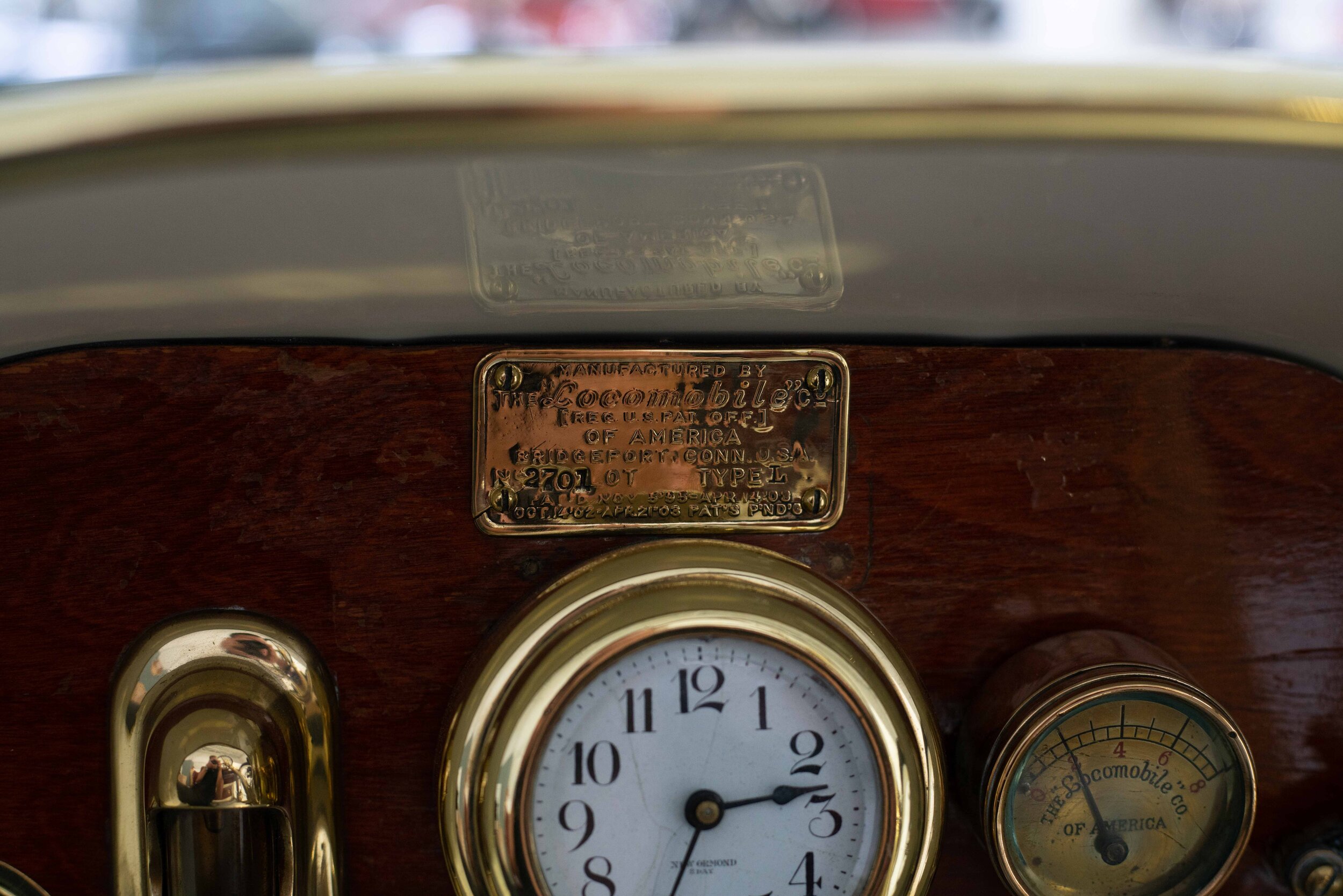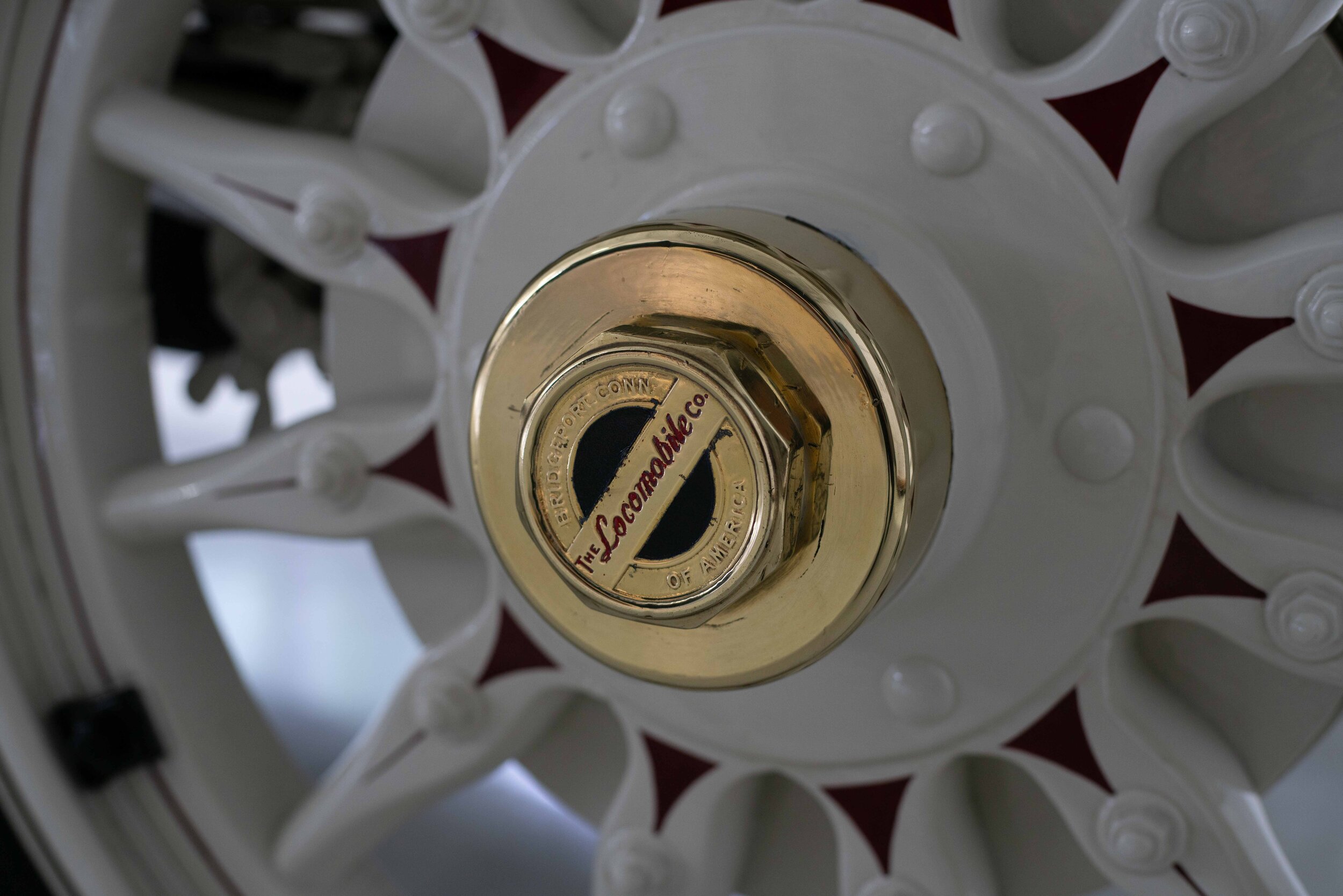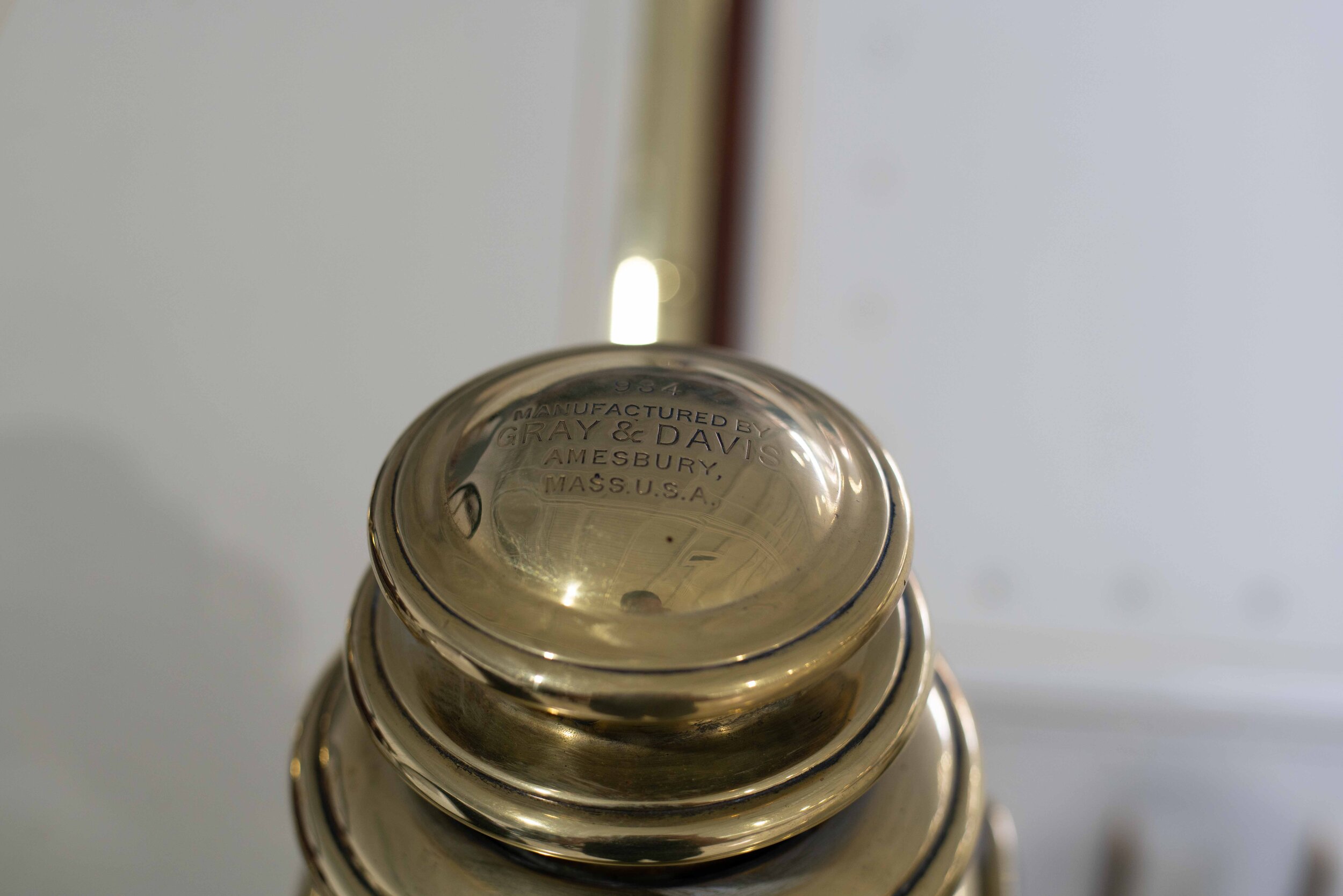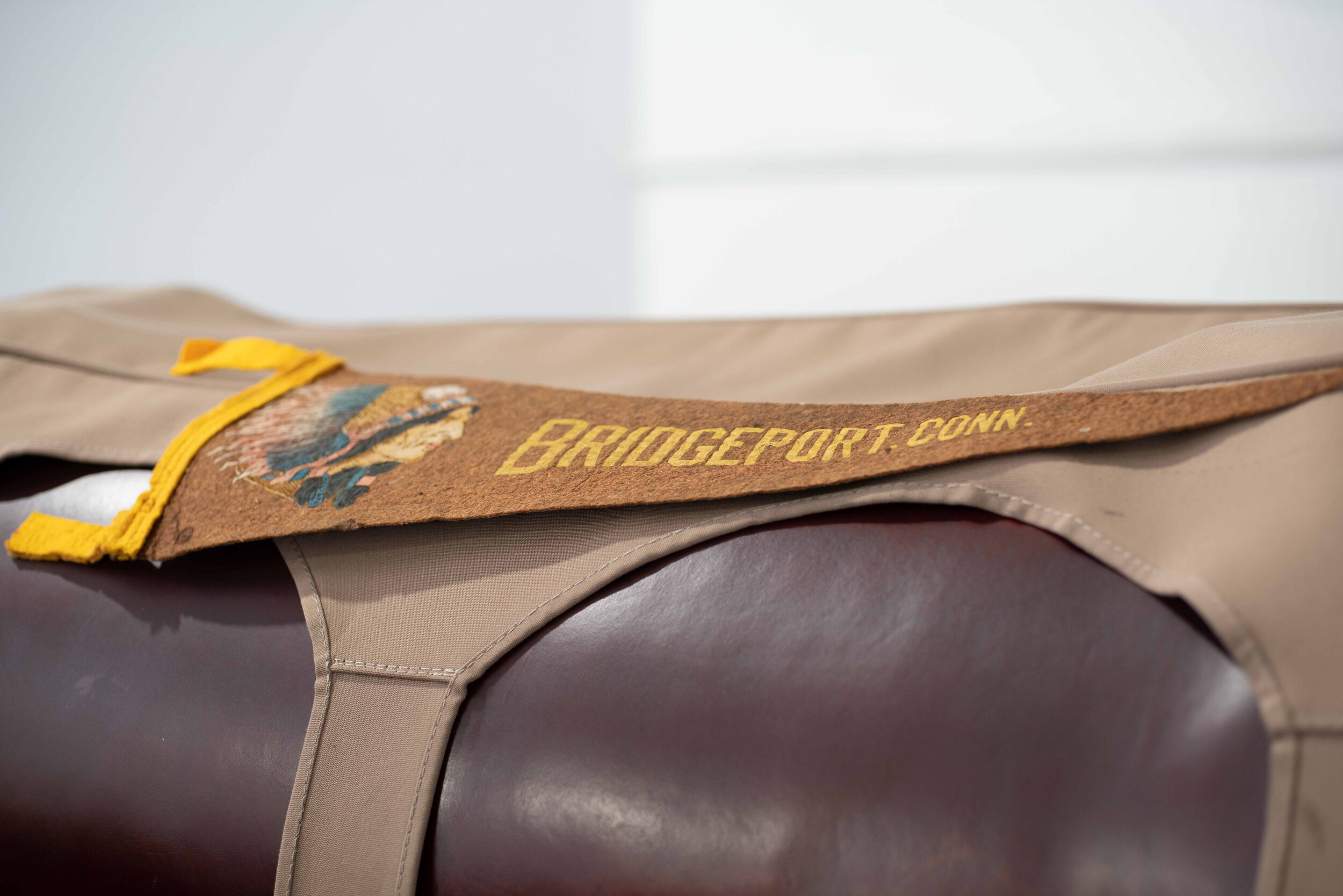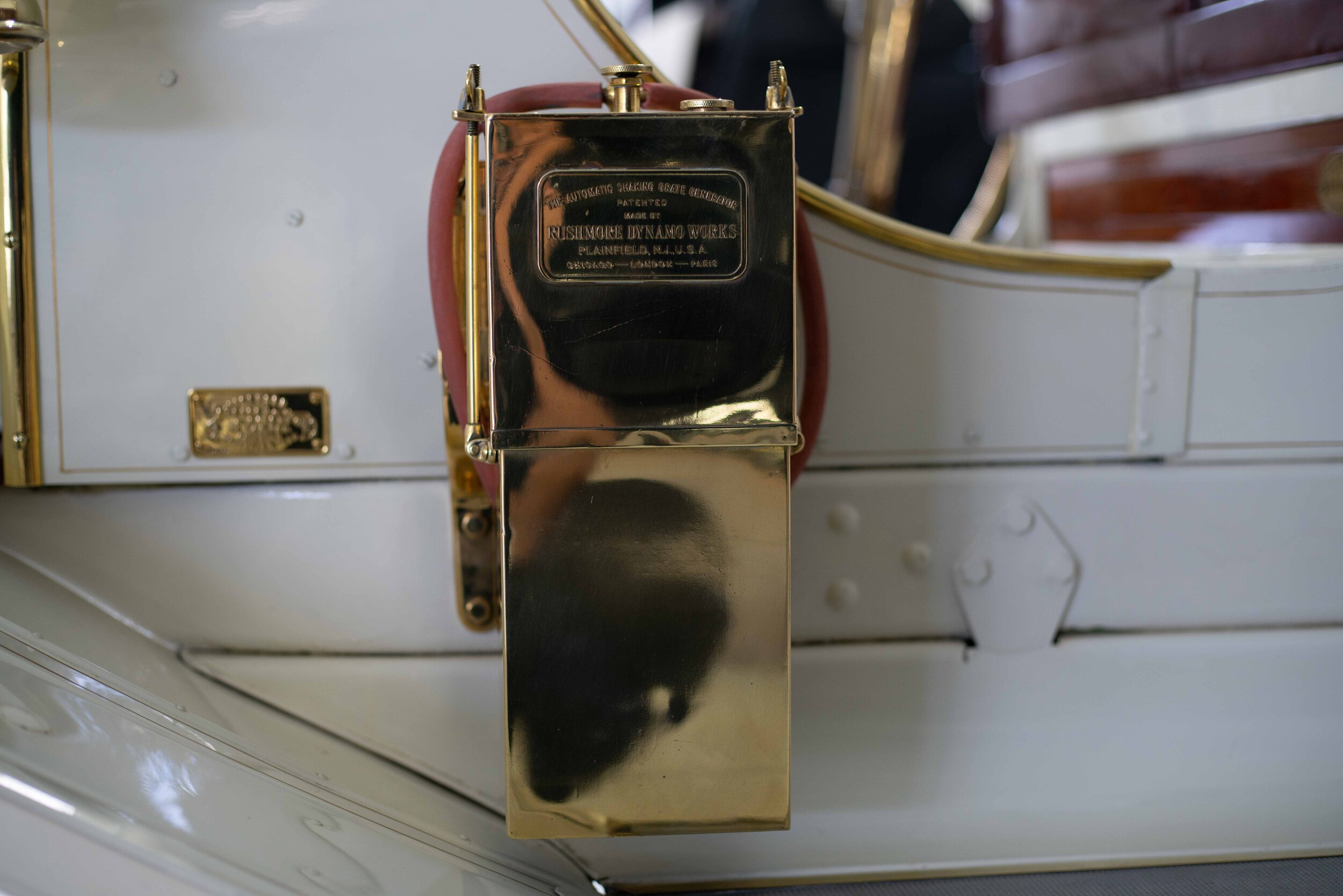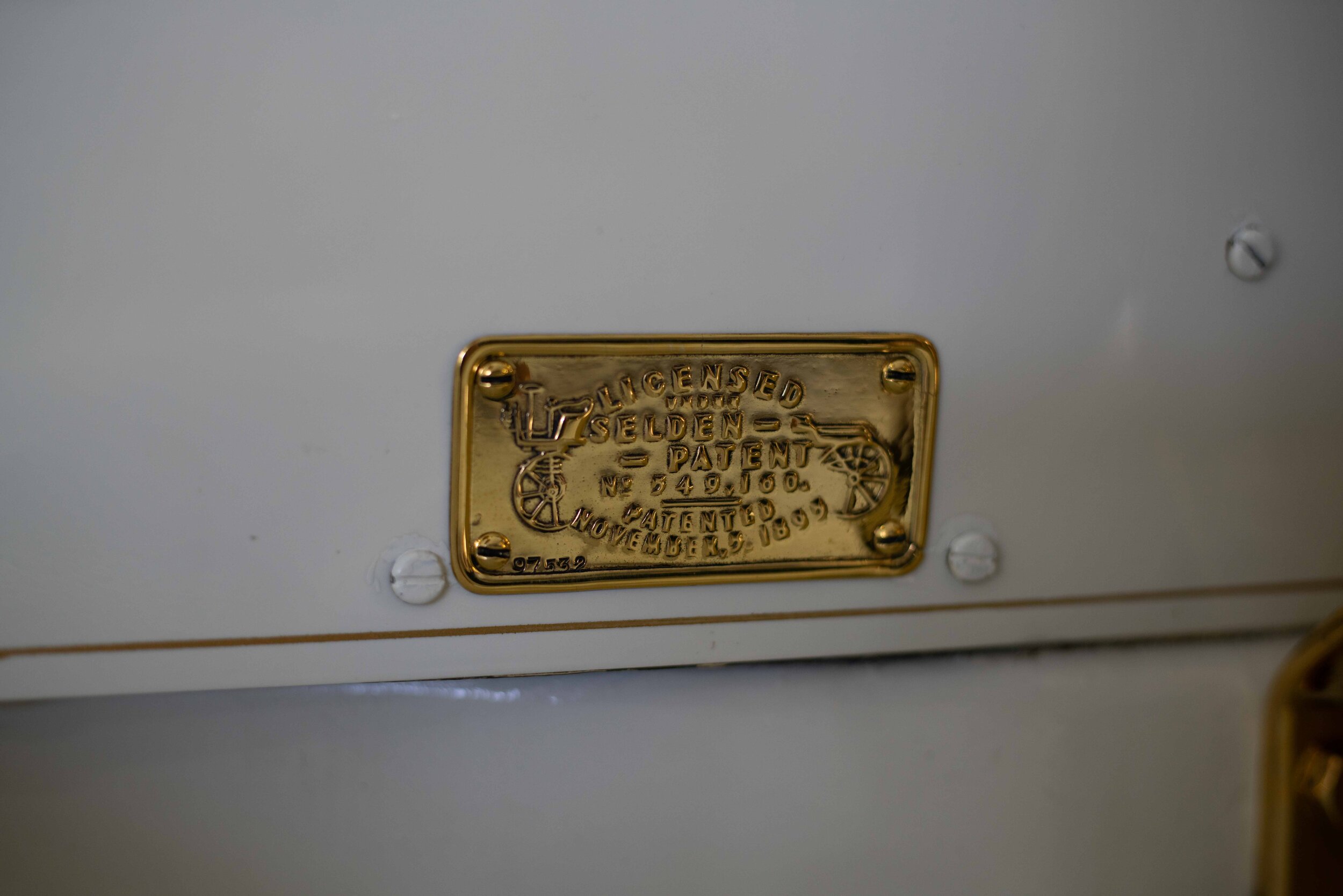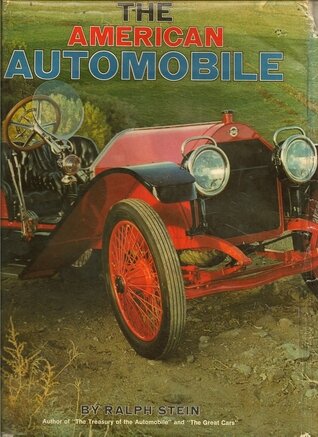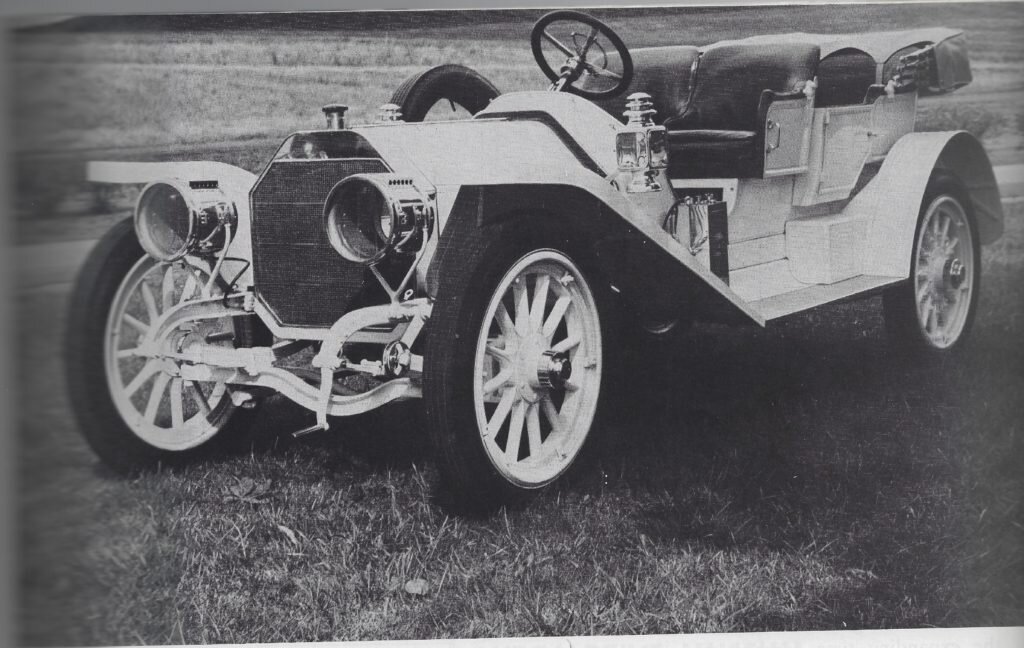Home at Last: The Locomobile Story
The year 1908 was a tremendously important one for America in terms of automotive success, the Thomas Flyer won the New York to Paris race and most importantly the 120 horsepower chain drive Locomobile #16 won the Vanderbilt Cup on Long Island. The win for Locomobile wasn't just any average victory, this was the most important win for America in automotive history. This was the race where the Bridgeport, Connecticut made American Locomobile won against the best that Europe had to offer. This was the first time ever an American car had achieved this feat, beating the Thomas Flyer New York to Paris win by months. The Locomobile "Old 16" became instantly famous also making Locomobile "The greatest car built in America." Locomobile was a car that had its roots from the Stanley brothers who sold their first design to John B. Walker who was the publisher and editor of Cosmopolitan magazine for an offer that they could not refuse: $250,000. Soon after he changed the name of the company to "The Locomobile Company of America" and sold half of the company to Amzi Barber who was the asphalt king in the United States. First located in Watertown, Massachusetts for a very short time, in 1900 they moved to Bridgeport, Connecticut where Locomobile would remain until its end in 1929. The Locomobile remained a steam powered car until 1902 when Andrew L. Riker became head of the engineering and design department. Riker was one of the founders and first president of the Society of Automotive Engineers (S.A.E.), with Henry Ford as his vice president. He encouraged the switch to the internal combustion engine for Locomobile and designed the first one for the company. He remained the head of engineering and design for Locomobile until he retired and left the company in 1918. His efforts and designs are what lead to Locomobile's racing program and success. Two 120 horsepower race cars were built for the 1906 Vanderbilt cup, the engines design and development done by Riker cost Locomobile $18,000 in 1906. Both cars did not place well in the race due to faulty tires and rim design. The 1907 Vanderbilt cup was cancelled because too many spectator deaths during the 1906 race from people running onto the track. In 1908 the race was on again and Locomobile was back with the same two cars and they came back to win. Old 16, driven by George Robertson, won and its counterpart #1, driven by Jim Florida, finished third due to faulty tires once again and a slight collision with a spectators touring car on the last lap. The win for Locomobile was such a huge deal that the entire city of Bridgeport, Connecticut shut down and everyone lined the streets to watch #16 race down Main Street all the way to Seaside park on the Long Island Sound where the Locomobile factory was located. #16 was then paraded around the country hitting all the major auto shows and at one point was displayed with the around the world Thomas. Fast forwarding years ahead, Old 16 and #1 were given to Andrew Riker when Locomobile was finished with them and they remained on his farm in Fairfield, Connecticut until sometime around 1920 when he sold them to Joseph Sessions of Bristol, Connecticut. Sessions owned J.H. Sessions & Son which manufactured hardware for traveling trunks. Sessions also owned one of the largest foundries in Connecticut that cast many of the parts for the Locomobile race cars. He owned the cars until 1941 when ownership of Old 16 and what was left of #1 was transferred to the Artist Peter Helck of Boston Corners, New York. Peter and his son Jerry would be famously seen with Old 16 at many of the antique car events of the 1940's, 50's and 60's here in New England. Peter was known to be seen driving Old 16 down I-95 and even into New York City.
Our Ownership of "Old 16"
In 1988, Peter Helck passed away at the age of 95 leaving the Locomobile race cars to his son Jerry. Old 16 remained in Helcks shed until 1998 when Manny and George Dragone obtained the car and for the first time in 90 years the car lived one mile away from the Locomobile factory at our now previous location on Main street in Bridgeport, Connecticut. At this point many significant cars had come through the doors at Dragone Classic Motorcars, but this, the ultimate American brass car, the most incredible piece of American racing history and a car that is so close to every car guys heart, a car that is part of our Bridgeport, Connecticut lineage and the car that my grandfather, father and uncle dreamed about owning had finally come into our possession. From us, Old 16 went to the Henry Ford Museum where it remains on display until this day. Interestingly we took Ferrari 250 TR serial# 0704 as part trade from the museum in that deal.
Alex's 1909 Model L Demi Tonneau
After the win in 1908, Locomobile became instantly famous and known around the world. The 1909 model year was a big one for Locomobile and the designs of the road cars were largely based off of the winning race car design. Very similar chassis, axles and transmission designs. The Model I had chain drive like the race cars, but the Model L was the first shaft drive model for Locomobile also designed by Andrew Riker. The Model L had a T-head 4 cylinder with a cast bronze crank case and was rated at 38 horsepower and had a 4 speed transmission. Locomobile even offered a miniature silver Vanderbuilt cup radiator mascot for the 1909 cars to commemorate the 1908 Vanderbuilt cup win. This Model L Demi Tonneau (4 passenger sport model) complete with its Vanderbuilt cup mascot has an outstanding history. Previously owned by the famed collector Whitney Snyder of Pennsylvania in the 1960's, and after his ownership it became part of the Larz Anderson Museum collection in Brookline, Massachusetts where it remained for 30 years. It was then deaccessioned and sold privately to another well known collector Courtland Cross of New Hampshire until this year when he sold the car to Alex. This car was also featured in and on the cover of the July -August 1966 issue of the Antique Automobile Magazine and featured in Ralph Stein's book: "The American Automobile" also published in the early 1960's. A very original car with a wonderful provenance. This is the first time this car has been home to Bridgeport, Connecticut in 109 years. As soon as Alex brought the car back from New Hampshire a few months ago, he took the car out of the trailer and drove the car straight down to seaside park in Bridgeport, Connecticut, the former site of the Locomobile factory. Alex said "I grew up loving Locomobile and actually was able to be around Old 16 when my dad had it. I also grew up reading "The American Automobile" by Ralph Stein, but I never thought I would actually own the white Model L featured in that book." We love Connecticut history and we especially love Locomobile. Having had Old 16 and being a part of its history is certainly an honor and Alex is very happy to own this Model L. Bridgeport, Connecticut may not be what it once was, but these cars will always be an incredible piece of Connecticut and American history that we hold very close to our hearts here at Dragone Classic Motorcars.
